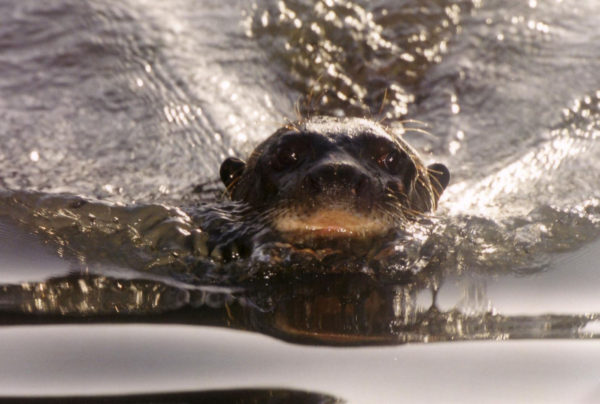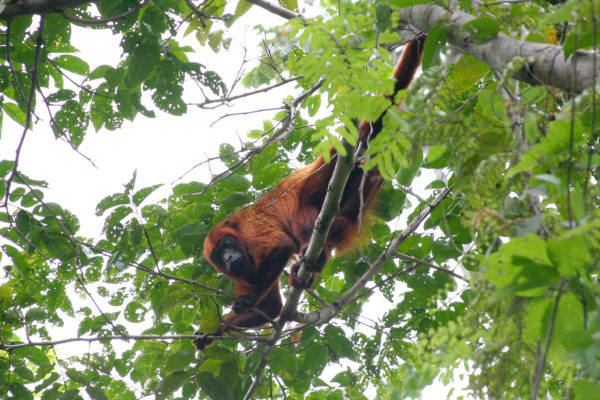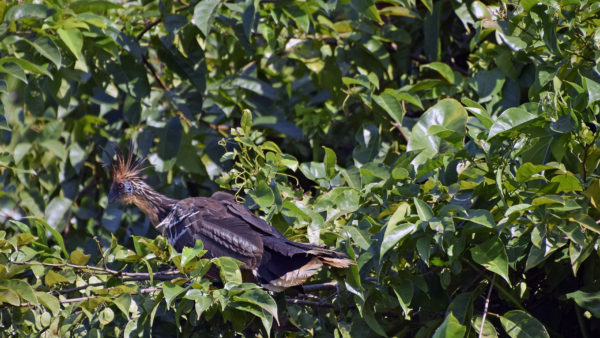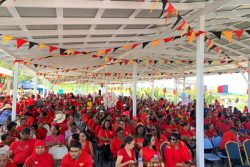A drive down De Hoop Road reveals miles upon miles of picturesque scenery: ploughed, burnt and irrigated fields, with houses dotting the landscape.
Approximately 25 miles down the road, in the village of Little Biaboo, Mahaica, you will find Ramesh’s Landing, which is the launch point for a four-mile-tour along the Mahaica River that is a surefire way to experience the diversity of Guyana’s vast bird species, particularly the national bird, as well as other wildlife, including river otters, howler monkeys and perhaps even a manatee or a caiman or two.
A group of media representatives made up the party for yesterday’s tour, which was organised to coincide with the handing over of a new boat and engine to the Mahaica River Birding Tour group.


The birding tour typically begins around 5.30 am, an hour earlier than the time yesterday’s group left the landing, and lasts approximately three hours. It is capped with a cultural display by tassa drummers.
It was said that it is best to depart before the sun ascends too high into the sky as in the cooler hours, the Hoatzin, commonly known locally as the Canje Pheasant, Guyana’s national bird, can be seen perched atop the trees, in plain sight, and in all its glory.

The Hoatzin’s squawk was heard long before the first one was spotted hidden high up within the branches of a tree. Thereafter, it became the most frequently spotted bird of the day, albeit with the aid of binoculars, as it was often camouflaged within the foliage. With an expert eye, the group’s tour guide Raywantie Ram was able to spot from a way off, a baby Hoatzin hidden within the lower branches of the trees, using its clawed wings to manoeuvre the dense thickets.
Ram stated that 150 species of birds can be found along the Mahaica River alone. She guaranteed that on any given day, during the birding exercise, one should be able to spot at least 50 of those species. The Brown Throated Parakeet, Yellow Headed Caracara, Black Crowned Night Heron, Ringed Kingfisher, Bronzy Jacamar, Red Cap Cardinal, Pale-Vented Pigeon, Black Collared Hawk and Smooth Billed Ani, also known as “Old Witch” are just some of the birds that made an appearance.
The otter was spotted as early as five minutes into the tour, catch in mouth, and it stayed in close range for quite some time, bobbing out of sight momentarily, only to appear once again, seemingly scoping out the tour party. It was first seen in the vicinity of the very location a baby caiman had only moments before appeared.
Ramesh Shibsahai, from whose landing the group had departed, and who was the boatman for the day, related that the otters were most often spotted in the creeks when the water had drained off the savannahs.
Another highlight of the tour was the sightings of Howler monkeys lazily straddling the upper branches of the trees, their burnt-orange coats brilliant in the sunlight.
No manatees were seen during yesterday’s tour, but it was stated that they usually dwell closer to the mouth of the Mahaica River, where the fresh and saltwater mix.









